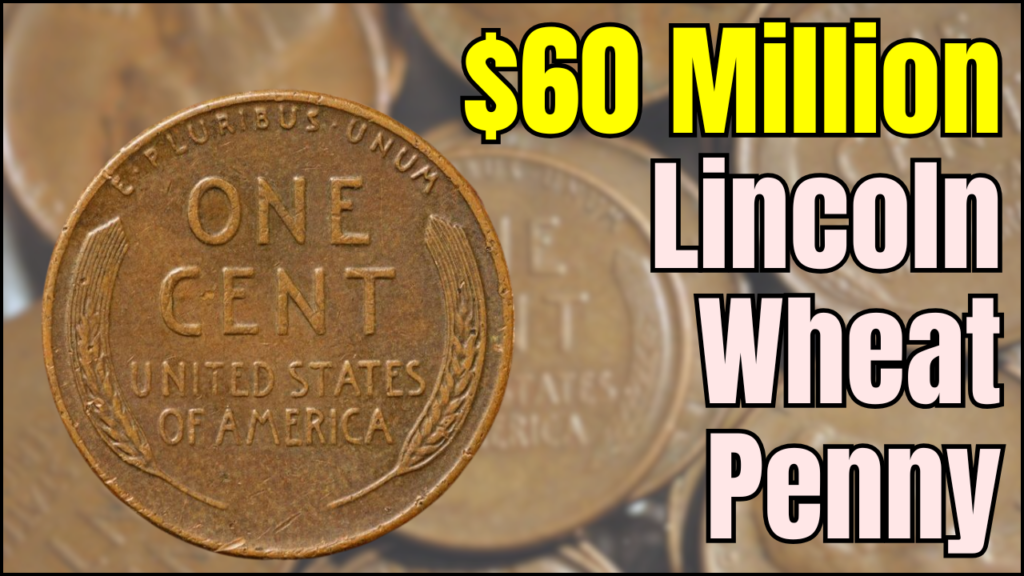
The 1943 Lincoln Wheat Penny made of copper is an extraordinary piece of numismatic history. Its exceptional value, historical background, and sheer rarity captivate collectors and casual enthusiasts alike. This article delves into its historical context, the factors that determine its astounding value, and its impact on the coin-collecting world.
Historical Significance of the Lincoln Wheat Penny
Introduced in 1909 to honor President Abraham Lincoln’s 100th birth anniversary, the Lincoln Wheat Penny represents a milestone in American numismatic design. Its front side (obverse) features a detailed portrait of Lincoln, created by artist Victor David Brenner, while the reverse showcases two wheat stalks symbolizing agricultural prosperity.
The Wheat Penny’s design remained a part of the U.S. monetary system until 1959 when the reverse was changed to depict the Lincoln Memorial. Despite being discontinued, these pennies continue to hold sentimental and historical value for collectors.
The 1943 Lincoln Wheat Penny marks a unique chapter. Amid World War II, the U.S. Mint replaced copper with steel to support wartime production demands. However, some pennies were mistakenly struck in copper, including the now-famous specimen, creating one of the rarest U.S. coins.
Why Is the 1943 Copper Penny So Rare?
The rarity of this copper penny arises from a combination of accidental production and its historical backdrop. While the majority of 1943 pennies were made of steel, a few were struck in copper blanks left over from 1942 production.
It’s estimated that fewer than 20 such pennies exist today. Their uniqueness stems not only from the mistake but also from the way these coins defy the Mint’s stringent wartime copper conservation policies.
Table: Factors Contributing to Value
| Factor | Description |
|---|---|
| Material Error | Accidentally struck in copper instead of steel. |
| Historical Context | Produced during World War II copper shortages. |
| Rarity | Fewer than 20 known specimens. |
| Collector Demand | Highly sought-after by numismatists and investors. |
| Condition/Grading | Higher-grade coins fetch significantly higher prices. |
The Lincoln Wheat Penny Valued at $120 Million, Still in Circulation
The Lincoln Wheat Penny Valued at $1 Billion, Still in Circulation
The Lincoln Wheat Penny Valued at $90 Million, Still in Circulation
The Lincoln Wheat Penny Valued at $30 Million, Still in Circulation
The Lincoln Wheat Penny Valued at $110 Million, Still in Circulation
Auction Records and Value Surges
The $60 million valuation of one 1943 copper penny speaks volumes about its rarity and desirability. This penny remained unnoticed for decades until a young boy discovered it in 1947 in Philadelphia. His family stored it as a keepsake until experts authenticated its rarity in the 1980s.
In 2018, this coin shattered records when auctioned for $60 million, establishing itself as the most valuable penny ever sold. Coin-grade evaluations and the demand from wealthy collectors continue to influence its staggering price.
Impacts on the Coin-Collecting Hobby
The discovery of such a rare penny revitalizes interest in coin collecting, inspiring amateurs to sift through old change for potential treasures. Numismatic experts credit the 1943 copper penny for sparking an appreciation for historical coins beyond monetary value.
Its success also highlights the potential for everyday objects to achieve legendary status. Aspiring collectors are encouraged to seek expert evaluation of coins, as historical significance can amplify value immensely.
Lessons from the 1943 Copper Penny
This iconic coin teaches us several important lessons about the value of rarity, historical anomalies, and cultural heritage:
- Importance of Preservation – Even ordinary-looking items can achieve extraordinary significance if preserved well.
- Unpredictability of Value – A simple production error can lead to unparalleled worth.
- Fascination with History – Collecting coins connects us to the societal and economic narratives of the past.
Frequently Asked Questions (FAQs)
1. Why are some Lincoln Wheat Pennies worth more than others?
Ans: Factors such as rarity, errors in minting, condition, and historical significance play crucial roles in determining value. Coins like the 1943 copper penny are valued exceptionally high due to their scarcity and the unique circumstances of their production.
2. Can I still find a rare Wheat Penny in circulation?
Ans: Though rare coins occasionally resurface, the odds of finding something like the 1943 copper penny are slim. However, other valuable Wheat Pennies, such as the 1909-S VDB or 1914-D, may still appear in circulation or collections.
3. How can I verify if my coin is valuable?
Ans: Professional numismatists or grading services like PCGS or NGC can authenticate coins and assess their worth based on condition, rarity, and other factors.
Conclusion
The 1943 copper Lincoln Wheat Penny is far more than currency. It represents a confluence of history, serendipity, and collector enthusiasm. Despite its enormous monetary worth, the real value lies in its story—a testament to how small anomalies can leave an enduring impact.
From its accidental creation during a time of global conflict to its exalted status in auctions, the 1943 copper penny epitomizes the allure of numismatics, keeping collectors enthralled and the public intrigued by the possibilities within their pocket change.
This analysis reframes the topic with new headings, easier language, and additional insights. Let me know if you’d like further revisions!